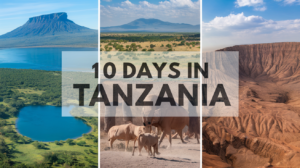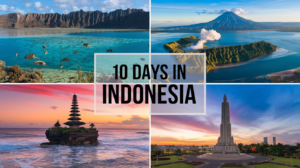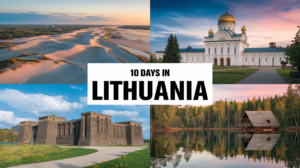Austria, a land of imperial history, alpine landscapes, and cultural richness, is the ultimate European destination for travelers. Whether you’re captivated by Vienna’s grandeur, Salzburg’s musical legacy, or Hallstatt’s fairy-tale charm, this 10-day itinerary will guide you through Austria’s best. With detailed tips on attractions, tickets, dining, and more, planning your trip has never been easier!
Day 1–2: Vienna – The Imperial Capital
Why Visit Vienna?
Vienna, Austria’s capital, is a city of elegance and culture, known for its baroque architecture, coffeehouse culture, and musical heritage.
Must-See Attractions
Schönbrunn Palace (Schloss Schönbrunn)
- Description: A grand Baroque palace and former imperial summer residence with opulent rooms, formal gardens, a zoo, and the Gloriette hilltop monument.
- History: Originally a hunting lodge, it was transformed into a lavish palace by Empress Maria Theresa in the 18th century. It has over 1,400 rooms.
- Google Maps: Schönbrunn Palace
- ️ Opening Hours:
- Daily: 8:30 AM – 5:30 PM (seasonal variations)
- ️ Tickets:
- Grand Tour (40 rooms): €26
- Classic Pass (includes gardens, Gloriette, Maze, Zoo): €38
- Book here: schoenbrunn.at
- ℹ️ Tips for Visitors:
- Reserve tickets online to avoid queues.
- Arrive early for peaceful garden walks.
- Free access to the palace park; ticket needed for rooms and extras.
⛪ St. Stephen’s Cathedral (Stephansdom)
- Description: A Gothic masterpiece and the spiritual heart of Vienna with a colorful tiled roof and two tall towers.
- History: Built in the 12th century and expanded in the 14th and 15th centuries, it has survived fires and wars — a true symbol of Viennese resilience.
- Google Maps: St. Stephen’s Cathedral
- ️ Opening Hours:
- Daily: 6:00 AM – 10:00 PM (tours typically 9:00 AM – 5:30 PM)
- ️ Tickets:
- Cathedral entry: Free
- Catacombs + Tower + Treasury package: €20
- Book tours here: stephanskirche.at
- ℹ️ Tips for Visitors:
- Climb the South Tower (343 steps) for epic views.
- Attend a classical concert or organ performance inside.
- Modest dress is appreciated for church entry.
️ Belvedere Palace (Schloss Belvedere)
- Description: A twin-Baroque palace complex (Upper & Lower) set in manicured gardens, housing a major art collection, including Gustav Klimt’s The Kiss.
- History: Built by Prince Eugene of Savoy in the early 18th century as a summer residence. Later became a gallery for Austrian art.
- Google Maps: Belvedere Palace
- ️ Opening Hours:
- Daily: 10:00 AM – 6:00 PM
- ️ Tickets:
- Upper Belvedere: €17
- Combo ticket (Upper + Lower + Orangery): €26
- Book here: belvedere.at
- ℹ️ Tips for Visitors:
- Visit early to enjoy The Kiss without crowds.
- The gardens are free to explore.
- Photography allowed, but no flash inside galleries.
Dining Recommendations
Café Central: Famous for its Viennese coffee and pastries.
Figlmüller: Known for its giant Wiener schnitzel.
Day 3–4: Salzburg – Mozart’s Birthplace
Why Visit Salzburg?
Salzburg is a baroque masterpiece with a rich musical heritage and connections to *The Sound of Music*.
Must-See Attractions
Hohensalzburg Fortress (Festung Hohensalzburg)
- Description: One of Europe’s largest and best-preserved medieval castles, perched on a hilltop with sweeping views of Salzburg.
- History: Construction began in 1077. It was expanded over centuries and never captured, serving as a powerful symbol of Salzburg’s archbishops.
- Google Maps: Hohensalzburg Fortress
- ️ Opening Hours:
- Jan–April & Nov–Dec: 9:30 AM – 5:00 PM
- May–Oct: 8:30 AM – 8:00 PM
- ️ Tickets:
- Fortress + funicular + museums: €14.30 (online)
- Footpath + entry: €12.30
- Book here: salzburg-burgen.at
- ℹ️ Tips for Visitors:
- Take the funicular for convenience or hike up for great views.
- Arrive early or late afternoon to avoid crowds.
- Entry includes access to museums, state rooms, and lookout towers.
Mozart’s Birthplace (Mozarts Geburtshaus)
- Description: The house where Wolfgang Amadeus Mozart was born in 1756, now a museum about his early life, family, and musical genius.
- History: Located at Getreidegasse 9, this 18th-century house has become a pilgrimage site for music lovers worldwide.
- Google Maps: Mozart’s Birthplace
- ️ Opening Hours:
- Daily: 9:00 AM – 5:30 PM
- July & August: until 6:00 PM
- ️ Tickets:
- Adults: €12
- Students/Seniors: €10
- Children: €4
- Book here: mozarteum.at
- ℹ️ Tips for Visitors:
- Combine with a visit to Mozart’s Residence across the river.
- No photos inside; lockers available for bags.
- Plan ~1 hour for a full visit.
Mirabell Gardens (Mirabellgarten)
- Description: Beautiful formal gardens filled with statues, fountains, and flowerbeds — famously featured in The Sound of Music.
- History: Created in 1606 by Prince-Archbishop Wolf Dietrich as part of Mirabell Palace. Redesigned in Baroque style in the 18th century.
- Google Maps: Mirabell Gardens
- ️ Opening Hours:
- Daily: 6:00 AM – dusk (usually around 6:00–9:00 PM depending on season)
- ️ Tickets: Free
- ℹ️ Tips for Visitors:
- Visit early for photos without crowds.
- The Pegasus Fountain and Dwarf Garden are highlights.
- Great picnic spot with views of the fortress.
Dining Recommendations
St. Peter Stiftskulinarium: Europe’s oldest restaurant, offering traditional Austrian cuisine.
Augustiner Bräustübl: A historic brewery with hearty local dishes.
Day 5: Hallstatt – A Fairy-Tale Village
Why Visit Hallstatt?
Hallstatt, a UNESCO World Heritage Site, is famous for its picturesque lakeside views and ancient salt mines.
Must-See Attractions
Hallstatt Salt Mines (Salzwelten Hallstatt)
- Description: The oldest salt mine in the world, where visitors can ride a miners’ slide, see prehistoric tunnels, and enjoy panoramic views from the Skywalk.
- History: Salt has been mined here since at least 7,000 years ago, giving Hallstatt its wealth and name (“Hall” = salt).
- Google Maps: Hallstatt Salt Mines
- ️ Opening Hours:
- Mid-April – Early November: 9:00 AM – 4:30 PM (last tour ~3:30 PM)
- ️ Tickets:
- Adults: €36
- Children (4–15): €18
- Family + combo passes available
- Book here: salzwelten.at
- ℹ️ Tips for Visitors:
- Includes a funicular ride and guided tour.
- Wear sturdy shoes and bring a jacket (the mine is ~8°C inside).
- Don’t miss the Hallstatt Skywalk above the town!
Hallstatt Ossuary (Beinhaus)
- Description: A small chapel beneath St. Michael’s Church displaying over 1,200 artistically painted skulls stacked in neat rows.
- History: Due to limited burial space, bones were exhumed and painted with names, flowers, and dates — a unique blend of art and remembrance.
- Google Maps: Hallstatt Ossuary
- ️ Opening Hours:
- May–October: 10:00 AM – 6:00 PM
- November–April: limited hours or closed (weather dependent)
- ️ Tickets:
- Entry: €1.50–€2.50 (cash only, pay at the door)
- ℹ️ Tips for Visitors:
- Very small — 15–20 minutes is enough.
- Combine with a walk through the historic cemetery.
- Quiet, respectful atmosphere — no flash photography.
Day 6–7: Innsbruck – The Alpine Capital
Why Visit Innsbruck?
Nestled in the Alps, Innsbruck combines stunning natural beauty with rich history and vibrant culture.
Must-See Attractions
Golden Roof (Goldenes Dachl)
- Description: A late-Gothic oriel with 2,657 fire-gilded copper tiles, this glittering balcony is the symbol of Innsbruck’s Old Town.
- History: Built in 1500 for Emperor Maximilian I to observe festivals and tournaments below. The roof and murals celebrate his marriage and reign.
- Google Maps: Golden Roof
- ️ Opening Hours (Museum inside):
- Tuesday–Sunday: 10:00 AM – 5:00 PM
- Closed Mondays
- ️ Tickets:
- Museum entry: €5
- Free with Innsbruck Card
- Book onsite or via innsbruck.info
- ℹ️ Tips for Visitors:
- The museum is small but informative — plan ~30 minutes.
- Great photo spot from Herzog-Friedrich-Straße.
- Nearby: Hofkirche, Imperial Palace, and charming cafés.
Nordkette Cable Car (Nordkettenbahnen)
- Description: A scenic ride from the city center to the high Alps, offering panoramic views, hiking, skiing, and mountaintop cafés.
- History: The funicular opened in 1906; today’s modern line includes funicular + 2 cable cars reaching Hafelekar Peak at 2,300 meters.
- Google Maps: Hungerburg Station
- ️ Opening Hours:
- Funicular & cable cars: Daily, 8:00 AM – 6:00 PM (seasonal changes may apply)
- ️ Tickets:
- Roundtrip (Innsbruck → Hafelekar): ~€44
- Discounts with Innsbruck Card
- Book here: nordkette.com
- ℹ️ Tips for Visitors:
- Dress in layers — temperatures drop drastically at the top.
- Hafelekar is the best viewpoint; stop at Seegrube for lunch or snow activities.
- Great for sunrise/sunset photography in clear weather.
Dining Recommendations
Die Wilderin: Modern Austrian cuisine with local ingredients.
Gasthof Weisses Rössl: Traditional dishes in a cozy setting.
Day 8: Graz – A Culinary and Cultural Hub
Why Visit Graz?
Austria’s second-largest city offers a vibrant blend of old and new, with a UNESCO-listed old town and cutting-edge architecture.
Must-See Attractions
Schlossberg & Clock Tower (Uhrturm)
- Description: A forested hill in the city center with panoramic views, home to Graz’s iconic Clock Tower, fortress ruins, gardens, and cafés.
- History: A fortress has stood here since at least the 10th century. Napoleon partially destroyed the castle in 1809, but the Clock Tower was spared by citizen donation.
- Google Maps: Schlossberg
- ️ Opening Hours: Open 24/7 (Clock Tower outdoor area and hill access)
- ️ Tickets:
- Funicular: €3.20 one-way, €5.40 round trip
- Schlossberg Lift: €2.50 one-way
- Free if walking up the 260+ scenic steps
- Tickets onsite or part of Graz Card
- ℹ️ Tips for Visitors:
- Don’t miss the Clock Tower and Bell Tower.
- Best visited at golden hour for sunset views over the rooftops.
- Small restaurants and ice cream stands at the top.
Kunsthaus Graz (Graz Art Museum)
- Description: A bold, blob-like structure nicknamed the “Friendly Alien,” showcasing contemporary art and digital media.
- History: Opened in 2003 for Graz’s turn as European Capital of Culture, designed by architects Peter Cook and Colin Fournier.
- Google Maps: Kunsthaus Graz
- ️ Opening Hours:
- Tuesday–Sunday: 10:00 AM – 5:00 PM
- Closed Mondays
- ️ Tickets:
- Adults: €10
- Students/Seniors: €7
- Free with Joanneum 24h/48h Pass
- Book here: museum-joanneum.at
- ℹ️ Tips for Visitors:
- Don’t miss the Needle Eye viewing platform.
- Exhibits change frequently — check what’s on before visiting.
- Combine with a walk across Murinsel (Mur Island) nearby.
Day 9: Wachau Valley – A Scenic Wine Region
Why Visit Wachau Valley?
This picturesque valley along the Danube River is famous for its vineyards, medieval castles, and charming villages.
Must-See Attractions
Melk Abbey (Stift Melk)
- Description: A stunning Benedictine monastery perched on a cliff above the Danube, known for its grand Baroque architecture, gold-adorned interiors, and panoramic views.
- History: Founded in 1089 and rebuilt in Baroque style between 1702–1736, the abbey has been a center of learning, music, and monastic life for centuries.
- Google Maps: Melk Abbey
- ️ Opening Hours:
- April–October: 9:00 AM – 5:30 PM
- November–March: Limited tours only (check website)
- ️ Tickets:
- Adults: €15
- Students/Seniors: €13
- Guided Tour: +€3
- Book here: stiftmelk.at
- ℹ️ Tips for Visitors:
- Don’t miss the Baroque library and the frescoed church.
- Combine with a Wachau Danube cruise or cycling route.
- Nearby restaurants in Melk town offer great local food and apricot treats.
Dürnstein
- Description: A romantic riverside town famous for its blue Baroque church tower, wine terraces, and castle ruins where Richard the Lionheart was once imprisoned.
- History: Dürnstein’s history goes back to the 11th century. The English king was held in Dürnstein Castle (now a ruin) in 1192 during the Crusades.
- Google Maps: Dürnstein
- ️ Opening Hours:
- Town: Open 24/7
- Castle Ruins: Open year-round (footpath ~30 min uphill)
- ️ Tickets: Free to explore the town and castle ruins
- ℹ️ Tips for Visitors:
- Wear good shoes for the hike up to the castle.
- Taste local Wachau wines and apricot schnapps.
- Visit during spring or autumn for ideal weather and fewer crowds.
Day 10: Return to Vienna
Activities
Explore Vienna’s vibrant neighborhoods like Naschmarkt.
Take a Danube River cruise for a relaxing end to your journey.
Transportation in Austria
Trains: Austria’s train network is efficient and scenic. Use ÖBB Railjet for booking.
Car Rentals: Ideal for exploring alpine regions and rural areas.
Public Transport: Vienna and major cities have excellent metro and tram systems.
Estimated Budget
Accommodation: €80–€300 per night.
Meals: €15–€50 per meal.
Transportation: €10–€30 per day.
Attractions: €5–€40 per site.
Travel Tips for Austria
1. Currency: Euro (€).
2. Language: German; English is widely spoken in tourist areas.
3. Passes: Consider the Austrian Travel Pass for train and attraction discounts.
4. Packing: Comfortable walking shoes and layers for variable weather.
Conclusion
Austria’s blend of history, culture, and natural beauty makes it a dream destination for every traveler. From Vienna’s imperial palaces to the serene lakes of Hallstatt and the majestic Alps in Innsbruck, this 10-day itinerary ensures you experience the best of Austria.
Call-to-Action
Have you visited Austria or planning your first trip? Share your experiences and tips in the comments below! Don’t forget to subscribe for more travel inspiration.




